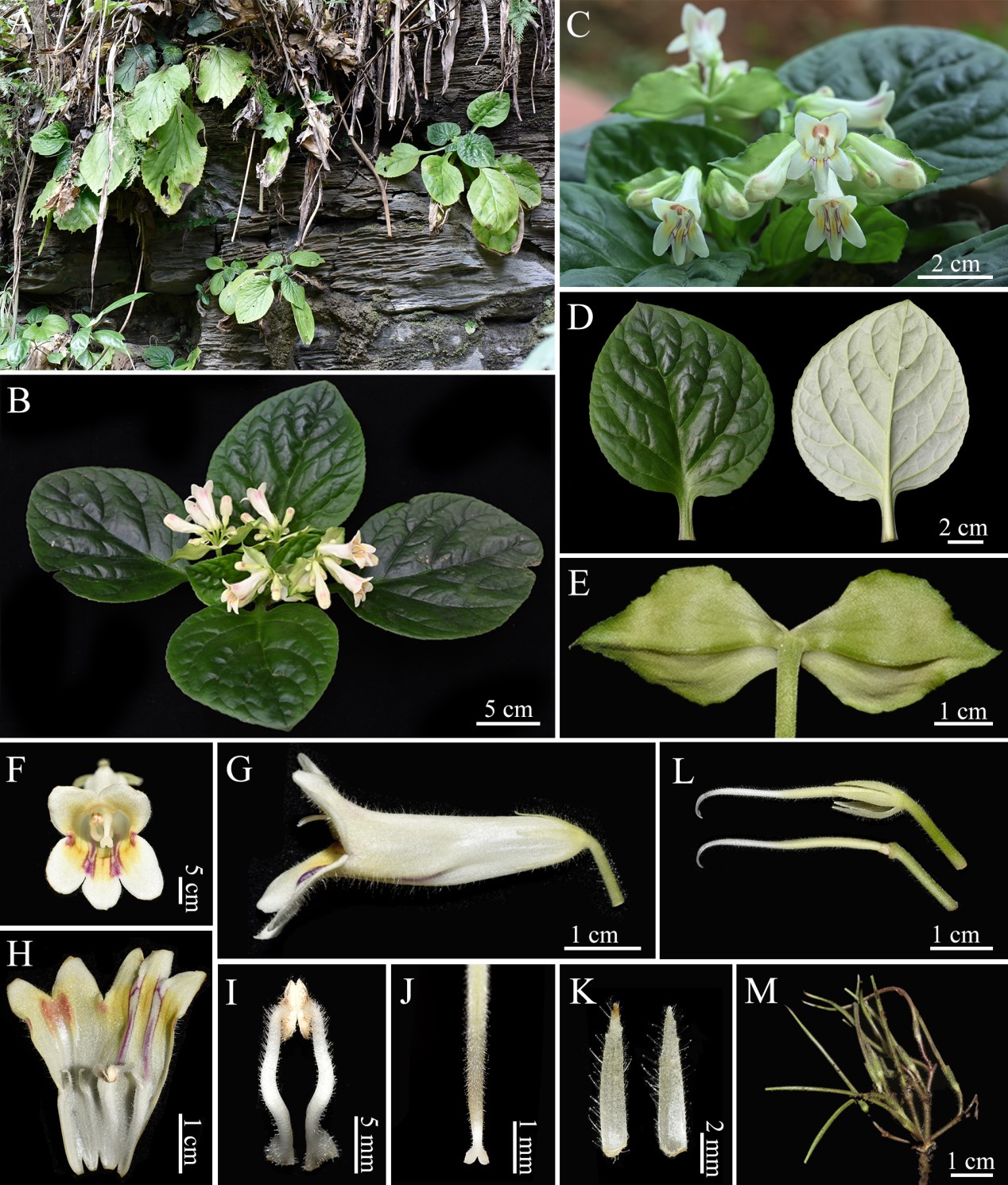New Species of Gesneriaceae Discovered in Guangdong Karst——Primulina nanlingensis
A research team from the South China Botanical Garden, Chinese Academy of Sciences, has discovered and named a new species of Gesneraceae plant, Primulina nanlingensis, in the limestone karst region of northern Guangdong. This discovery adds a rare member to the plant diversity treasure trove of the Nanling Mountain Range.
The genus Primulina is the most species-rich genus of Gesneriaceae in China. Currently, it comprises over 220 documented species within China and more than 240 species globally. The karst regions of southern and southwestern China serve as biodiversity hotspots for Primulina, where most species are narrowly endemic to isolated habitats. The Nanling Mountain Range, characterized by its complex topography and heterogeneous soil conditions, fosters high species diversity and endemism within this genus. Traditional taxonomic studies relying on morphological traits have historically challenged the differentiation of closely related species. Recent advances in molecular biology techniques, however, provide novel perspectives for resolving taxonomic ambiguities among these morphologically complex groups.
In January 2024, during a collaborative survey conducted by Prof. Hongfeng Chen and his research team from the South China Botanical Garden, Chinese Academy of Sciences, and Senior Engineer Yuanqiu Li from the Guangdong Shimentai National Nature Reserve, a suspected new species of Primulina (Gesneriaceae) was discovered on limestone cliffs within the reserve. The team immediately collected specimens and molecular materials, which were subsequently introduced to the South China Botanical Garden for further morphological analysis and phenological monitoring. Through comparative morphological studies, specimen verification, and molecular phylogenetic analysis, the plant was confirmed as a new species and named Primulina nanlingensis J.C. Luo & H.F. Chen, 南岭报春苣苔 (Chinese name) after the Nanling Mountain Range, its discovery site(Figure 1).
Research indicates that P. nanlingensis is morphologically similar to P. versicolor and P. pengii. Compared to P. versicolor, it has larger leaves with densely crenate margins, notably lower number of flowers , ovate-lanceolate bracts with shallow serrations, calyx lobes bearing 1–3 teeth per side, and filaments densely densely glandular at base and tip, with the pistil densely glandular-puberulent. In contrast to P. pengii, it exhibits a longer corolla, pale-yellow flower color, and distinct bract morphology. Molecular phylogenetic evidence further supports its distinct phylogenetic status as an independent species.
Primulina nanlingensis is currently restricted to two limestone hills within the Shimentai National Nature Reserve in Yingde, Guangdong Province, with a small population size. Following IUCN criteria, the research team assessed it as Near Threatened (NT) and recommended enhanced habitat protection measures. This species exhibits unique flower morphology and delicate pale-yellow blooms, demonstrating high ornamental potential for future horticultural applications.
Prof. CHEN HongFeng emphasized: "As a new member of Primulina, the discovery of P. nanlingensis not only enriches the floristic diversity repository of the Nanling region but also provides critical material for studying plant adaptive evolution mechanisms in karst landscapes."
This study was financially supported by the Science and Technology Projects in Guangzhou and Guangdong Flagship Project of Basic and Applied Basic Research. The findings were recently published in the international plant taxonomy journal PhytoKeys. Article link: https://doi.org/10.3897/phytokeys.254.145138

Figure 1. Primulina nanlingensis J.C.Luo & H.F.Chen A Plants in natural habitat; B Habit in flowering; C Cyme and frontal view of corolla; D The adaxial and abaxial surface of leaf blades; E Outside surface of bracts; F Frontal view of corolla; G Side view of corolla; H Opened corolla showing stamens, staminodes and colour; I Stamens; J Stigma; K Outside and inside surface of calyx lobes; L Pistil with calyx lobes and pistil without calyx lobes; M Infructescence.(Imaged by CHEN et al)
File Download: